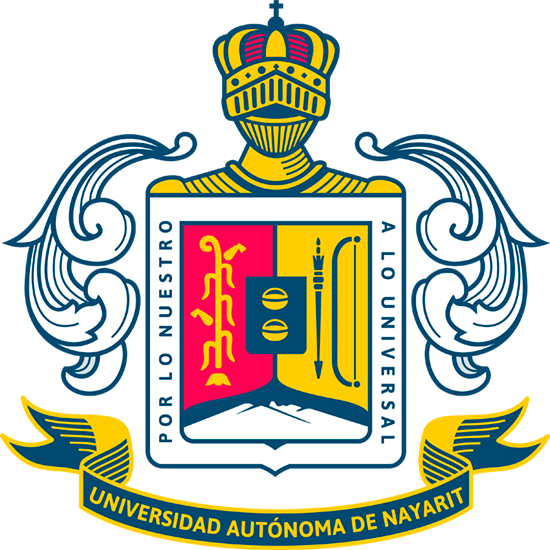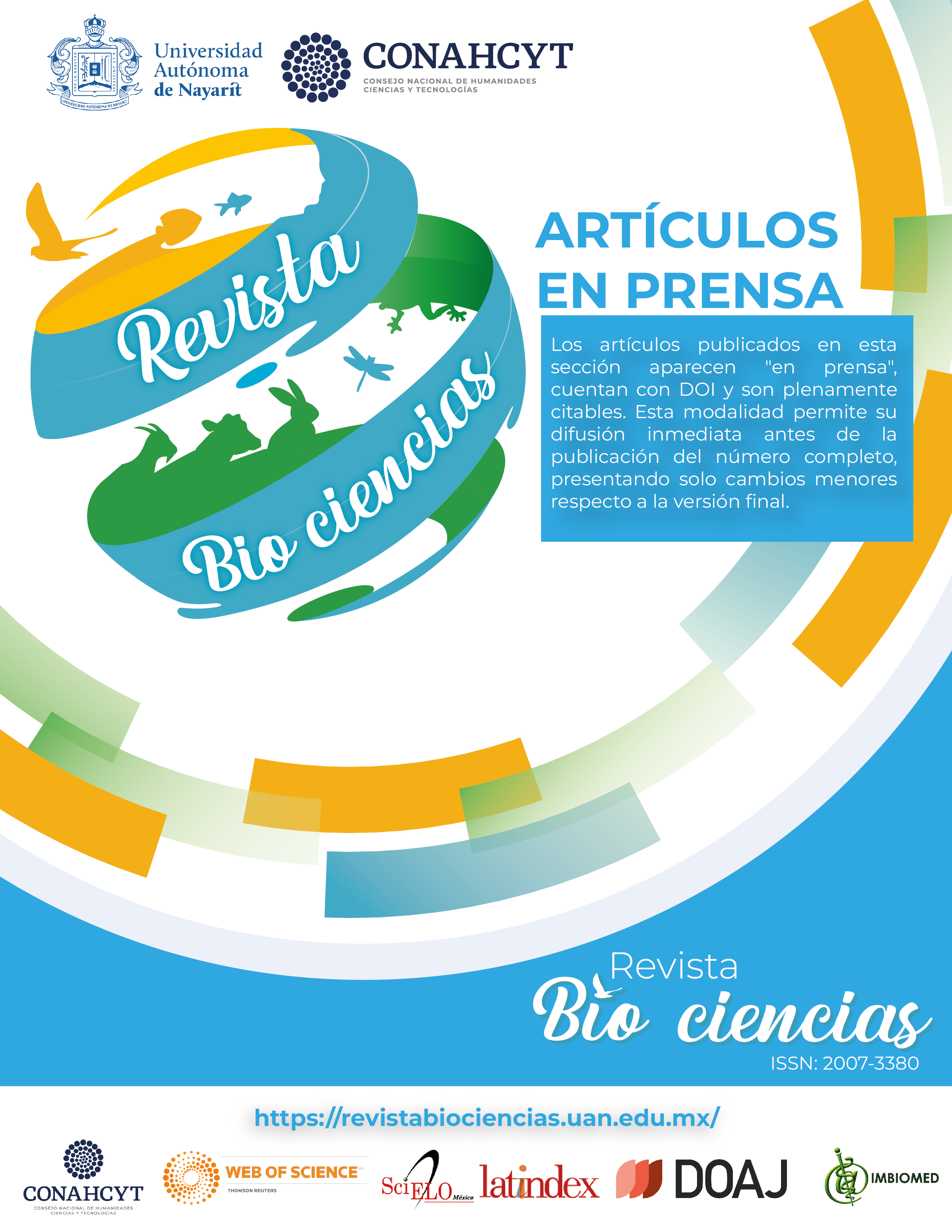Resumen
Las microalgas son ricas en compuestos bioactivos con efecto bioestimulante que, al ser aplicados a plantas, estimulan sus procesos fisiológicos. El objetivo fue evaluar el efecto bioestimulante de Chlorella sorokiniana en el cultivo de tomate. Se evaluó a concentración de 0.1, 0.5 y 1 % de biomasa de microalga, con aplicaciones en 3 formas: riego, foliar y mixto (riego y foliar). En los principales resultados se observó que la altura y clorofila fueron mayores en la aplicación al suelo a 0.1%. El mayor peso del fruto (67±0.08 g) y rendimiento (13.01±2.17 t×ha-1) se tuvo en la aplicación al suelo a 0.5 %. Así mismo, se obtuvo mayor número de frutos en la aplicación al suelo al 1% (331±7.95), siendo significativamente mayor (p ≤ 0.05) al testigo (123±2.77). El peso seco foliar y radicular en las aplicaciones foliares y mixtas a concentraciones de 0.1 y 0.5 % fueron mayores (p≤0.05) al testigo. Así mismo, se observó en el análisis foliar que los macronutrientes permanecieron en el rango “suficientes”, mientras que el testigo fueron “bajos”. Con ello se demuestra que bajas concentraciones de extracto de microalga, estimula tanto el crecimiento de la planta, el aprovechamiento de nutrientes y el rendimiento del cultivo.
Citas
Alcántar González, G. & Sandoval Villa G. (1999). Manual de análisis químico de tejido vegetal: Guía de muestreo, preparación, análisis e interpretación. México, D. F. Sociedad Mexicana de la Ciencia del Suelo. https://www.sidalc.net/search/Record/KOHA-OAI-TEST:23162/Description
American Public Health Association. (1926). Standard methods for the examination of water and wastewater (Vol. 6). American public health association.
Arioli, T., Mattner, S. W., Islam, M. T., Tran, T. L. C., Weisser, M., Winberg, P., & Cahill, D. M. (2024). Applications of seaweed extracts in agriculture: An Australian perspective. Journal of Applied Phycology, 36(2), 713-726. https://doi.org/10.1007/s10811-023-03120-x
Barone, V., Puglisi, I., Fragalà, F., Lo Piero, A. R., Giuffrida, F., & Baglieri, A. (2019). Novel bioprocess for the cultivation of microalgae in hydroponic growing system of tomato plants. Journal of Applied Phycology, 31(1), 465-470. https://doi.org/10.1007/s10811-018-1518-y
Battacharyya, D., Babgohari, M. Z., Rathor, P., & Prithiviraj, B. (2015). Seaweed extracts as biostimulants in horticulture. Scientia Horticulturae, 196, 39-48. https://doi.org/10.1016/j.scienta.2015.09.012
Calderón-Arias, C., Calle-Carmen, K., Carreño-Farfán, C., Estela-Campos, C., Carbajal-Gamarra, F. M., Barturén-Quispe, A. P., Chirinos-Cuadros, H. Y., & Sánchez-Purihuamán, M. N. (2024). Efecto de bacterias rizosféricas de Prosopis limensis Benth. En el desarrollo de Solanum lycopersicum L. bajo estrés salino. Bioagro, 36(1), 49-60. https://doi.org/10.51372/bioagro361.5
Campobenedetto, C., Agliassa, C., Mannino, G., Vigliante, I., Contartese, V., Secchi, F., & Bertea, C. M. (2021). A Biostimulant Based on Seaweed (Ascophyllum nodosum and Laminaria digitata) and Yeast Extracts Mitigates Water Stress Effects on Tomato (Solanum lycopersicum L.). Agriculture, 11(6), 557. https://doi.org/10.3390/agriculture11060557
Chanda, M., Merghoub, N., & EL Arroussi, H. (2019). Microalgae polysaccharides: The new sustainable bioactive products for the development of plant bio-stimulants? World Journal of Microbiology and Biotechnology, 35(11), 177. https://doi.org/10.1007/s11274-019-2745-3
Coppens, J., Grunert, O., Van Den Hende, S., Vanhoutte, I., Boon, N., Haesaert, G., & De Gelder, L. (2016). The use of microalgae as a high-value organic slow-release fertilizer results in tomatoes with increased carotenoid and sugar levels. Journal of Applied Phycology, 28(4), 2367-2377. https://doi.org/10.1007/s10811-015-0775-2
Farid, R., Mutale-joan, C., Redouane, B., Mernissi Najib, E., Abderahime, A., Laila, S., & Arroussi Hicham, E. (2019). Effect of Microalgae Polysaccharides on Biochemical and Metabolomics Pathways Related to Plant Defense in Solanum lycopersicum. Applied Biochemistry and Biotechnology, 188(1), 225-240. https://doi.org/10.1007/s12010-018-2916-y
Federation, W. E., & Aph Association. (2025). Standard methods for the examination of water and wastewater. (Vol. 21). American Public Health Association (APHA). Washingtong DC, USA. https://books.google.com.mx/books/about/Standard_Methods_for_the_Examination_of.html?id=buTn1rmfSI4C&redir_esc=y
Félix, J. W., Sánchez-Chávez, E., Tosquy-Valle, O., Preciado-Rangel, P., & Márquez-Quiroz, C. (2024). Biofortificación de Frijol (Phaseolus vulgaris L.) Variedad Verdín con Quelato y Sulfato de Hierro. Revista Terra Latinoamericana, 42. https://doi.org/10.28940/terra.v42i0.1831
Ferreira, A., Melkonyan, L., Carapinha, S., Ribeiro, B., Figueiredo, D., Avetisova, G., & Gouveia, L. (2021). Biostimulant and biopesticide potential of microalgae growing in piggery wastewater. Environmental Advances, 4, 100062. https://doi.org/10.1016/j.envadv.2021.100062
Garcia-Gonzalez, J., & Sommerfeld, M. (2016). Biofertilizer and biostimulant properties of the microalga Acutodesmus dimorphus. Journal of Applied Phycology, 28(2), 1051-1061. https://doi.org/10.1007/s10811-015-0625-2
Gharib, F. A. E. L., Osama, K., Sattar, A. M. A. E., & Ahmed, E. Z. (2024). Impact of Chlorella vulgaris, Nannochloropsis salina, and Arthrospira platensis as bio-stimulants on common bean plant growth, yield and antioxidant capacity. Scientific Reports, 14(1), 1398. https://doi.org/10.1038/s41598-023-50040-4
Gitau, M. M., Farkas, A., Ördög, V., & Maróti, G. (2022). Evaluation of the biostimulant effects of two Chlorophyta microalgae on tomato (Solanum lycopersicum). Journal of Cleaner Production, 364, 132689. https://doi.org/10.1016/j.jclepro.2022.132689
Godlewska, K., Michalak, I., Pacyga, P., Baśladyńska, S., & Chojnacka, K. (2019). Potential applications of cyanobacteria: Spirulina platensis filtrates and homogenates in agriculture. World Journal of Microbiology and Biotechnology, 35(6), 80. https://doi.org/10.1007/s11274-019-2653-6
Gracida-Valdepeña, M. L., Navarro-Aguirre, F., Herrera-Acosta, K., Ulloa-Mercado, G., Meza-Escalante, E., Plascencia-Jatomea, R., González-Meza, G., & Serrano-Palacios, D. (2020). Nutrient removal from swine wastewater using a thermotolerant strain of Chlorella sp. Grown under outdoor conditions. Journal of Chemical Technology & Biotechnology, 95(4), 1243-1249. https://doi.org/10.1002/jctb.6313
Hernández-Herrera, R. M., Santacruz-Ruvalcaba, F., Ruiz-López, M. A., Norrie, J., & Hernández-Carmona, G. (2014). Effect of liquid seaweed extracts on growth of tomato seedlings (Solanum lycopersicum L.). Journal of Applied Phycology, 26(1), 619-628. https://doi.org/10.1007/s10811-013-0078-4
Jones, J. J., Wolf, B., & Mills, H. A. (1991). Plant analysis handbook. A practical sampling, preparation, analysis, and interpretation guide. Pp 213. https://www.cabidigitallibrary.org/doi/full/10.5555/19921969819
Krid, A., El Hallabi, M., Ennoury, A., Nhhala, N., Aberkani, K., Nhiri, M., & Zerrouk, M. H. (2023). The potential of seaweed extracts as a biostimulant for improving salt stress tolerance of Solanum lycopersicum L. South African Journal of Botany, 161, 305-316. https://doi.org/10.1016/j.sajb.2023.08.020
Kumar, G., & Sahoo, D. (2011). Effect of seaweed liquid extract on growth and yield of Triticum aestivum var. Pusa Gold. Journal of Applied Phycology, 23(2), 251-255. https://doi.org/10.1007/s10811-011-9660-9
Kumari, R., Kaur, I., & Bhatnagar, A. K. (2011). Effect of aqueous extract of Sargassum johnstonii Setchell & Gardner on growth, yield and quality of Lycopersicon esculentum Mill. Journal of Applied Phycology, 23(3), 623-633. https://doi.org/10.1007/s10811-011-9651-x
La Bella, E., Baglieri, A., Rovetto, E. I., Stevanato, P., & Puglisi, I. (2021). Foliar Spray Application of Chlorella vulgaris Extract: Effect on the Growth of Lettuce Seedlings. Agronomy, 11(2), 308. https://doi.org/10.3390/agronomy11020308
Mantzorou, A., Navakoudis, E., Paschalidis, K., & Ververidis, F. (2018). Microalgae: A potential tool for remediating aquatic environments from toxic metals. International Journal of Environmental Science and Technology, 15(8), 1815-1830. https://doi.org/10.1007/s13762-018-1783-y
Minaoui, F., Hakkoum, Z., Chabili, A., Douma, M., Mouhri, K., & Loudiki, M. (2024). Biostimulant effect of green soil microalgae Chlorella vulgaris suspensions on germination and growth of wheat (Triticum aestivum var. Achtar) and soil fertility. Algal Research, 82, 103655. https://doi.org/10.1016/j.algal.2024.103655
Mostafa, M. M., Hammad, D. M., Reda, M. M., & El-Sayed, A. E.-K. B. (2024). Water extracts of Spirulina platensis and Chlorella vulgaris enhance tomato (Solanum lycopersicum L.) tolerance against saline water irrigation. Biomass Conversion and Biorefinery, 14(17), 21181-21191. https://doi.org/10.1007/s13399-023-04460-x
Mutale-joan, C., Rachidi, F., Mohamed, H. A., Mernissi, N. E., Aasfar, A., Barakate, M., Mohammed, D., Sbabou, L., & Arroussi, H. E. (2021). Microalgae-cyanobacteria–based biostimulant effect on salinity tolerance mechanisms, nutrient uptake, and tomato plant growth under salt stress. Journal of Applied Phycology, 33(6), 3779-3795. https://doi.org/10.1007/s10811-021-02559-0
Mutale-joan, C., Redouane, B., Najib, E., Yassine, K., Lyamlouli, K., Laila, S., Zeroual, Y., & Hicham, E. A. (2020). Screening of microalgae liquid extracts for their bio stimulant properties on plant growth, nutrient uptake and metabolite profile of Solanum lycopersicum L. Scientific Reports, 10(1), 2820. https://doi.org/10.1038/s41598-020-59840-4
Navarro-López, E., Ruíz-Nieto, A., Ferreira, A., Acién, F. G., & Gouveia, L. (2020). Biostimulant Potential of Scenedesmus obliquus Grown in Brewery Wastewater. Molecules, 25(3), 664. https://doi.org/10.3390/molecules25030664
Rachidi, F., Benhima, R., Sbabou, L., & El Arroussi, H. (2020). Microalgae polysaccharides bio-stimulating effect on tomato plants: Growth and metabolic distribution. Biotechnology Reports, 25, e00426. https://doi.org/10.1016/j.btre.2020.e00426
Ranglová, K., Lakatos, G. E., Câmara Manoel, J. A., Grivalský, T., Suárez Estrella, F., Acién Fernández, F. G., Molnár, Z., Ördög, V., & Masojídek, J. (2021). Growth, biostimulant and biopesticide activity of the MACC-1 Chlorella strain cultivated outdoors in inorganic medium and wastewater. Algal Research, 53, 102136. https://doi.org/10.1016/j.algal.2020.102136
Ronga, D., Biazzi, E., Parati, K., Carminati, D., Carminati, E., & Tava, A. (2019). Microalgal Biostimulants and Biofertilisers in Crop Productions. Agronomy, 9(4), 192. https://doi.org/10.3390/agronomy9040192
Shukla, P. S., Mantin, E. G., Adil, M., Bajpai, S., Critchley, A. T., & Prithiviraj, B. (2019). Ascophyllum nodosum-Based Biostimulants: Sustainable Applications in Agriculture for the Stimulation of Plant Growth, Stress Tolerance, and Disease Management. Frontiers in Plant Science, 10. https://doi.org/10.3389/fpls.2019.00655
Stirk, W. A., Ördög, V., Novák, O., Rolčík, J., Strnad, M., Bálint, P., & van Staden, J. (2013). Auxin and cytokinin relationships in 24 microalgal strains1. Journal of Phycology, 49(3), 459-467. https://doi.org/10.1111/jpy.12061
Supraja, K. V., Behera, B., & Balasubramanian, P. (2020). Efficacy of microalgal extracts as biostimulants through seed treatment and foliar spray for tomato cultivation. Industrial Crops and Products, 151, 112453. https://doi.org/10.1016/j.indcrop.2020.112453
Weisser, M., Mattner, S. W., Southam-Rogers, L., Hepworth, G., & Arioli, T. (2024). Effect of a Fortified Biostimulant Extract on Tomato Plant Productivity, Physiology, and Growing Media Properties. Plants, 13(1), 4. https://doi.org/10.3390/plants13010004
Zulkarnaini, Z. M., Sakimin, S. Z., Mohamed, M. T. M., & Jaafar, H. Z. E. (2019). Relationship between chlorophyll content and soil plant analytical development values in two cultivars of fig (Ficus carica L.) as brassinolide effect at an open field. IOP Conference Series: Earth and Environmental Science, 250(1), 012025. https://doi.org/10.1088/1755-1315/250/1/012025

Revista Bio Ciencias por Universidad Autónoma de Nayarit se encuentra bajo una Licencia Creative Commons Atribución-NoComercial-SinDerivadas 4.0 Unported.
Basada en una obra en http://biociencias.uan.edu.mx/.
Permisos que vayan más allá de lo cubierto por esta licencia pueden encontrarse en http://editorial.uan.edu.mx/index.php/BIOCIENCIAS.licencia de Creative Commons Reconocimiento-NoComercial-SinObraDerivada 4.0 Internacional






